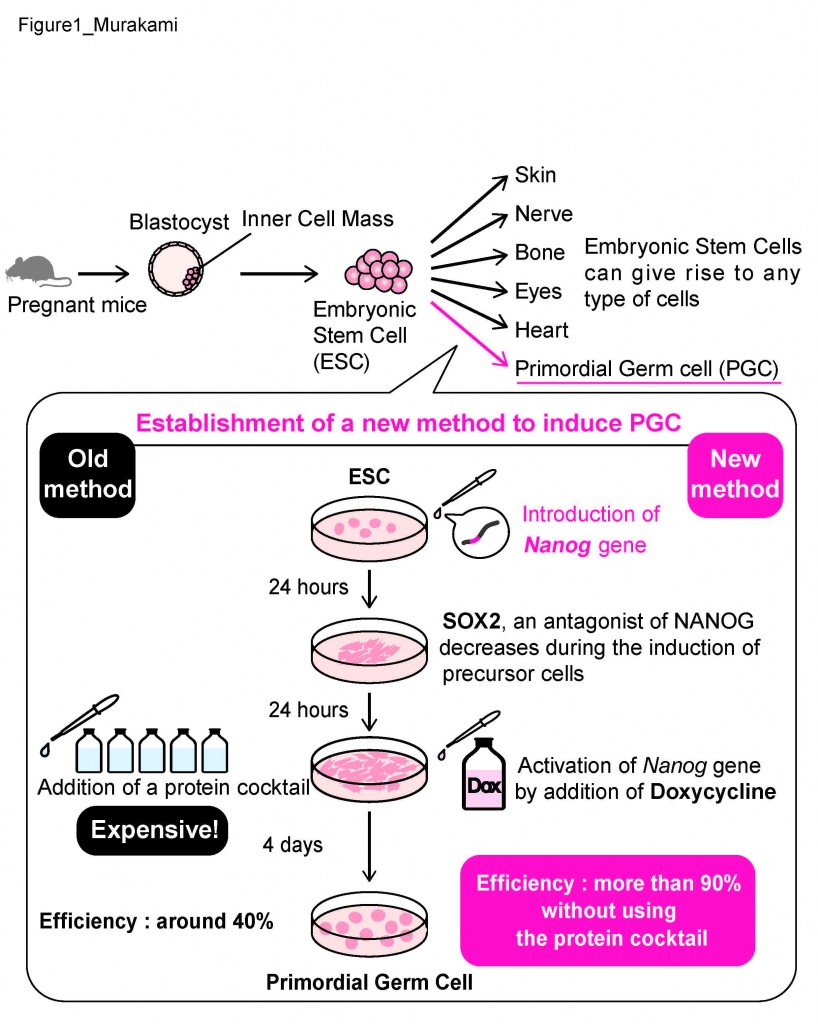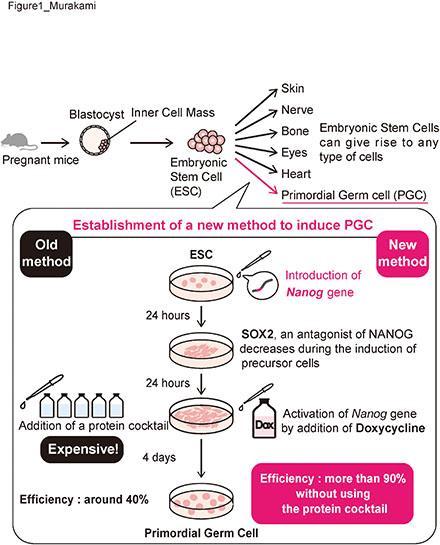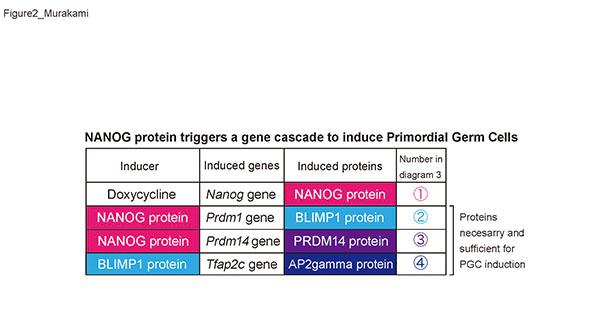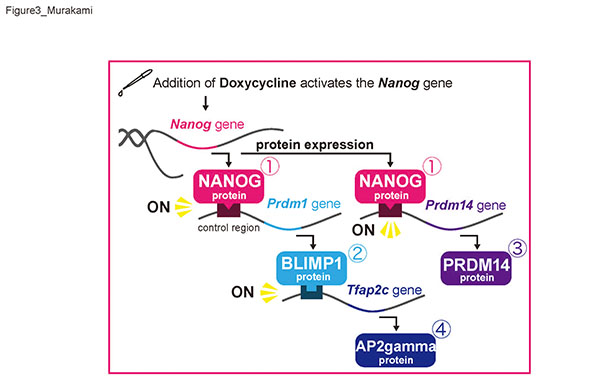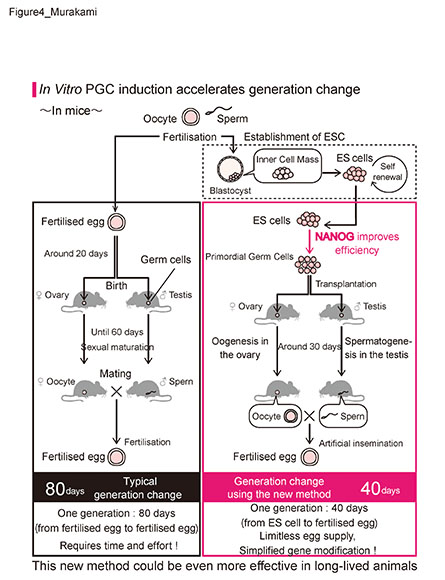A New Method for Inducing Germ Cells from Embryonic Stem Cells
Research Press Release | February 05, 2016
|
Efficiency of differentiation into primordial germ cells was increased to more than 90% without using expensive proteins. Highly effective animal experiments expected to facilitate basic research in reproduction therapy. |
||
|---|---|---|
|
Background |
Primordial germ cells (PGCs)1, which give rise to oocytes and sperm, can be created from embryonic stem cells (ESCs)2, which have the ability to become any type of cell within our bodies (pluripotency). However, creating PGCs from ESCs is an ineffective and costly process because it requires an expensive protein cocktail and only achieves a differentiation efficiency of 40%. Assistant Professor Kazuhiro MURAKAMI of Hokkaido University and a research group at Cambridge University have discovered a new gene that regulates the initiation of PGC fate. Based on their findings, they have established an innovative method for inducing PGCs from pluripotent cells with an efficiency of more than 90% without using expensive proteins. These discoveries will make a significant contribution to the comprehensive elucidation of the mechanism which governs PGC development, the promotion of basic research in the area of reproduction therapy, and all types of research that require animal experiments. This research was reported in Nature online on Jan. 11, 2016 (GMT). |
|
| Research Method |
1. Summary of the New Method 2. Elucidation of the function of the Nanog gene The Nanog gene plays a key role in the new method. The Nanog gene is induced by Doxycycline and translated into the NANOG protein. The NANOG protein then induces three other proteins: BLIMP1, PRDM14, and AP2gamma which are necessary and sufficient for initiating PGC fate. 3. How does the new method make animal experiments more efficient? Until the discovery of this new method, generations of mice were required to view the results of experimentation. As the gestation period for mice via natural mating is approximately eighty days per generation, the old method was time consuming and required upkeep of the mouse population. However, by using in vitro PGC induction, once ESCs have been established, an infinite number of PGCs can be obtained. Genetic modifications can be easily carried out and frozen preservation is even possible. Furthermore, fertilized eggs for the next generation can be obtained from ESCs in a shorter time span of about forty days. Since the induction efficiency from ESCs to PGCs is greatly increased using this new method, it has become possible to obtain PGCs reliably which could lead to more efficient and less expensive animal experiments. Regardless of species, this method is more effective in animal species which have a long life cycle such as primates. |
|
| Terms |
|
|
| Inquiries |
Kazuhiro MURAKAMI, Assistant Professor Graduate School of Life Science, Hokkaido University E-mail: murakami[at]sci.hokudai.ac.jp |
|
|
Japanese Link |
ES 細胞から生殖細胞へ新手法 (01.12.2016) | |
|
Publications |
NANOG alone induces germ cells in primed epiblast in vitro by activation of enhancers (1.11.2016) | |

